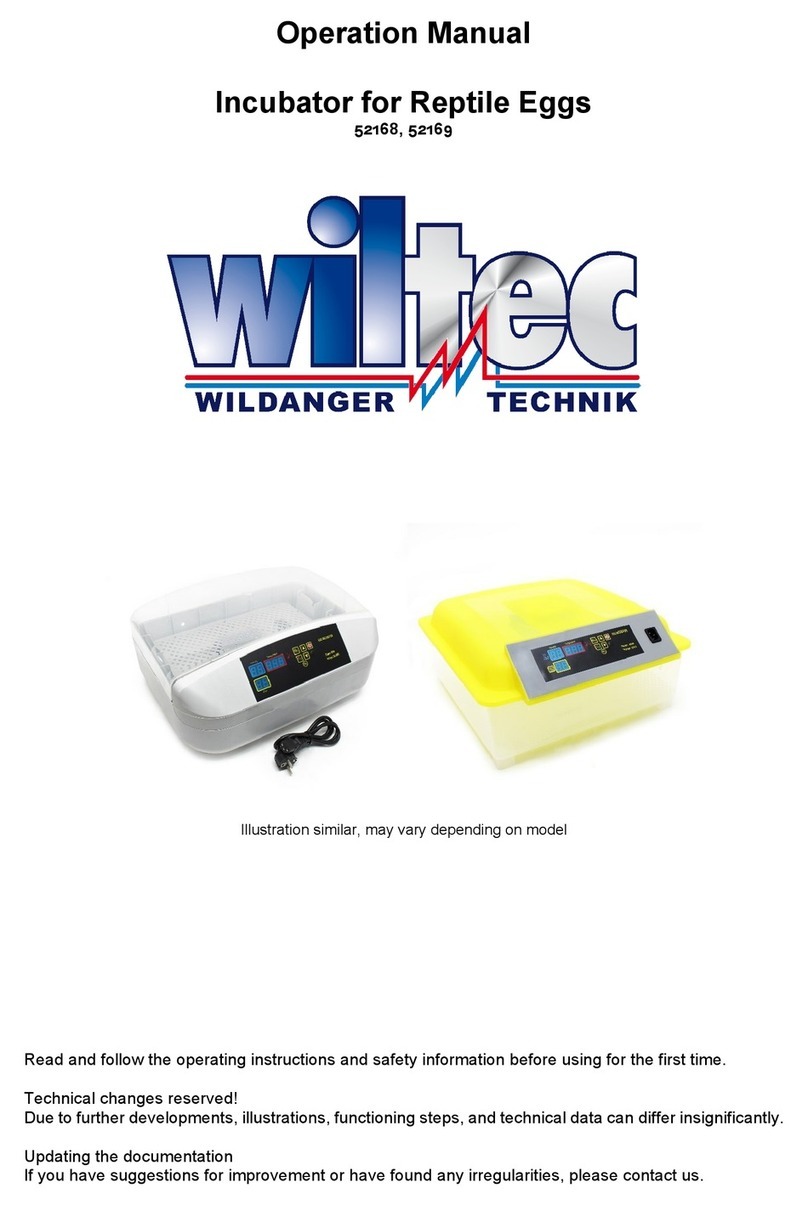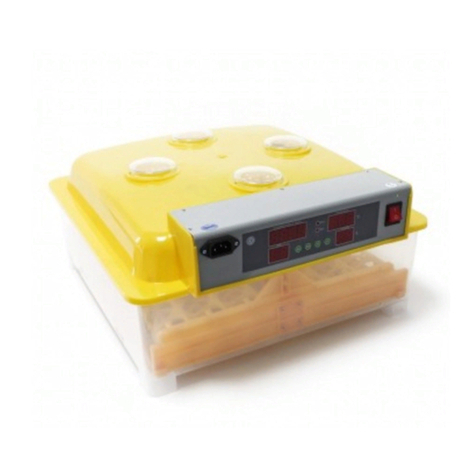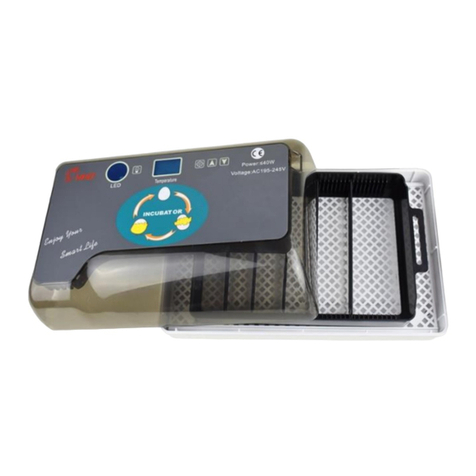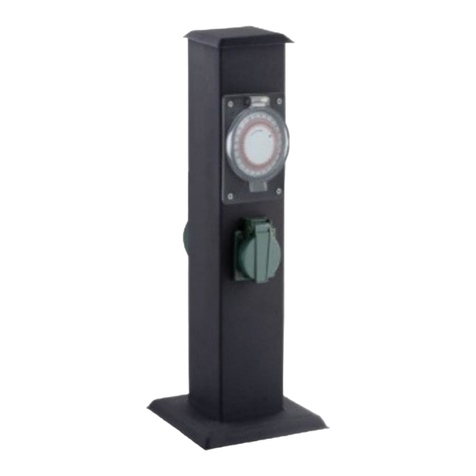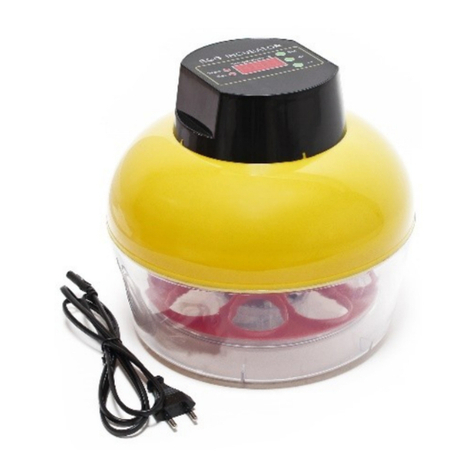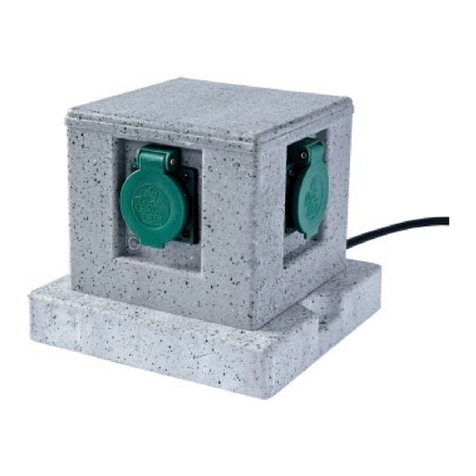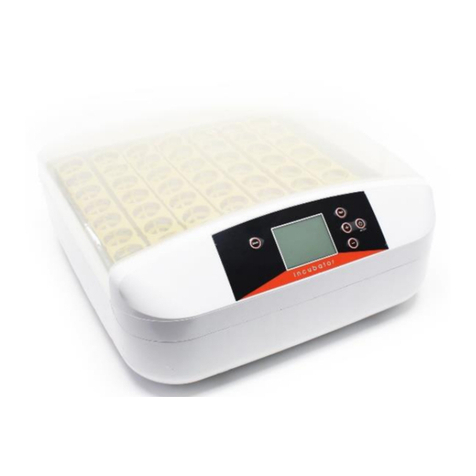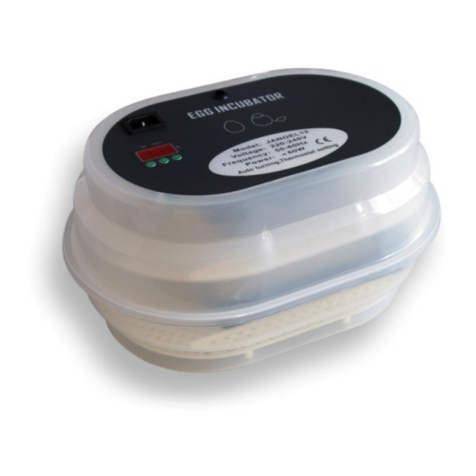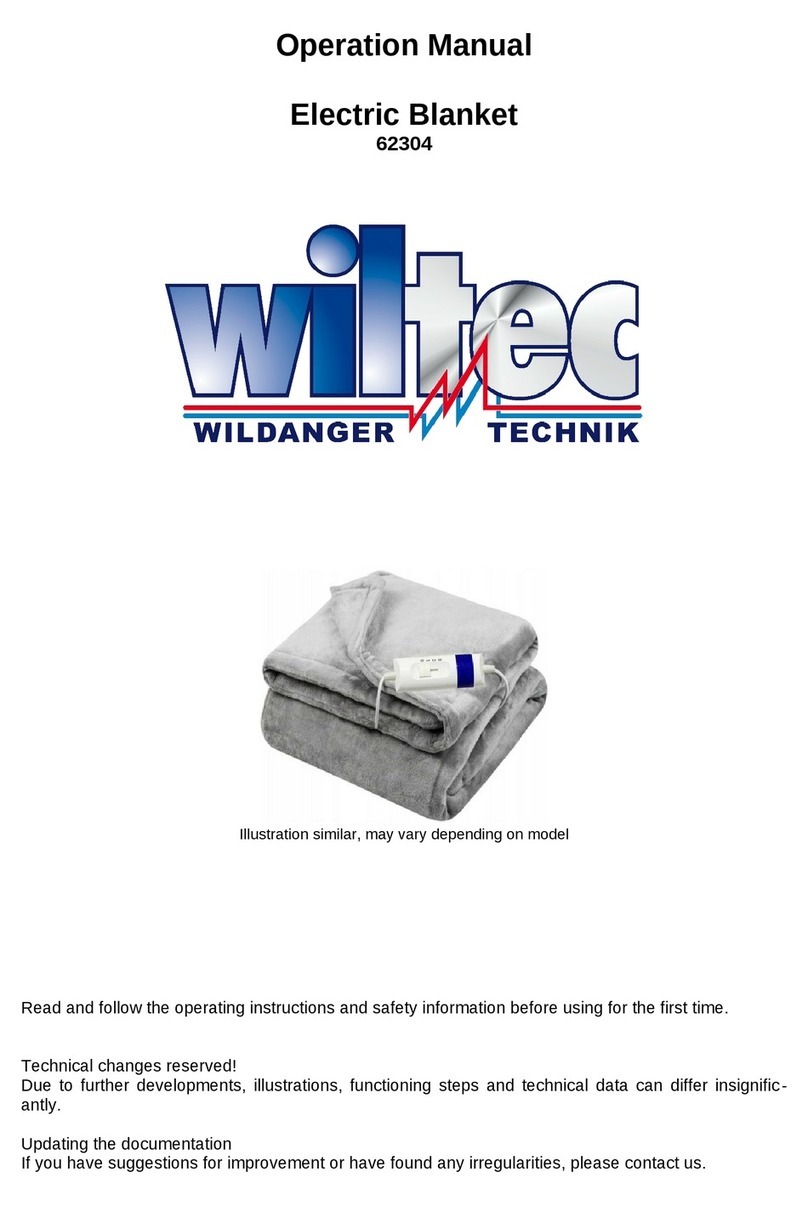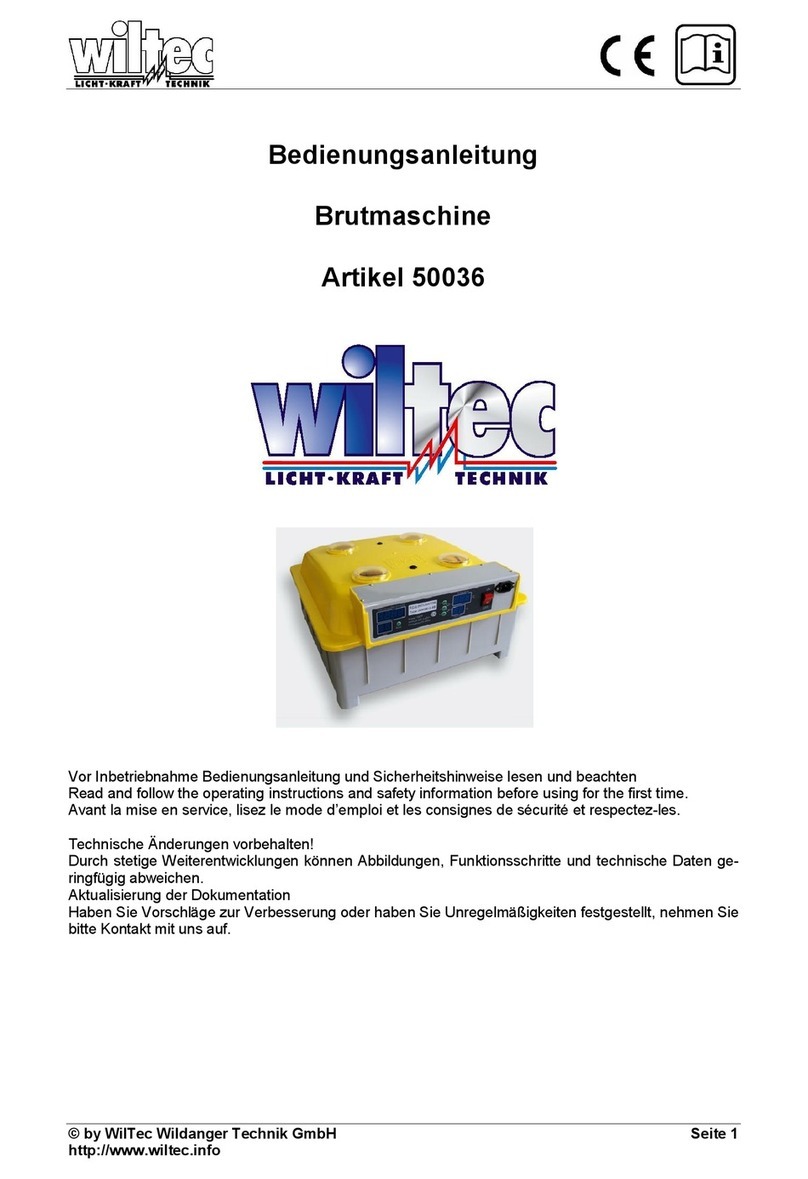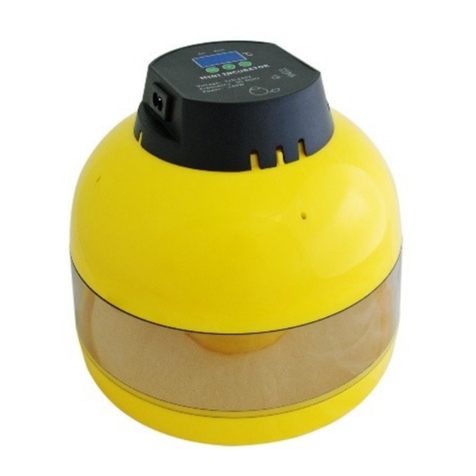© by WilTec Wildanger Technik GmbH Item 52170 Page 4
http://www.WilTec.de
http://www.aoyue.eu 05 2021-1
http://www.teichtip.de
The right location
For a good result, place the incubator into a heated room. There should not be any major fluctuations
of room temperature inside it. Ideally, the room temperature should be between 17 ℃and 25 ℃.
Additionally, there should be a good ventilation in this area, especially if there are multiple incubators
located in this room. There has to be an efficient ventilation, as a natural air supply ensures that the
developing embryos always have fresh oxygen.
Make sure that the incubator is placed on a flat, even surface and not in direct sunlight, on a solid
surface, which is approx. 80 cm above the floor.
It is recommended, to place the incubator far away from heating sources, drafts and windows, to avoid
harmful changes of temperatures. Additionally, the incubator should be kept with the included
Styrofoam packaging, this provides protection.
1. How have the eggs to be stored before placing them into the incubator?
Hatching eggs should not be kept longer than ten to twelve days. After that the success rate of hatch-
ing is very low. Store the eggs at a cool temperature (8–15 ℃) and at a relative air humidity of 75 %. In
case the hatching eggs were sent via post, they should rest for at least 24 hours before being placed
in the incubator.
Important: The eggs should be stored lying and need to be rotated halfway around their longitudinal
axis at least once a day.
2. When is the incubator ready?
The incubator should run for at least 24 hours before placing any eggs into it. If it is possible, let
the incubator run for a week without eggs. This way it is easy to see if all parameters can be adjusted
and working as required. Additionally, you will learn how the functions and the adjustments of the in-
cubator work during this time. Nothing is more harmful to the eggs than the wrong adjustments of the
incubator. If everything worked accordingly in the testing period, the incubator can be cleaned thor-
oughly with a suitable disinfectant.
The intended humid and warm climate in the incubator is a good breeding ground for bacteria and
fungi. Not disinfecting the incubator enables the growth of these and poses a threat to the entire
brood. Thus: Before the first breeding and after every new breeding, thoroughly disinfect the
incubator.
You need to make sure that the disinfectant is suitable for the material of the incubator. Otherwise, the
material can be attacked and the hatching process endangered.
Important notice on the parameters: Regard the term “internal temperature” (“internal”). Do not con-
fuse the term “internal temperature” (in the egg) with “internal temperature incubator.” The internal
temperature within the incubator constantly changes up and down. The internal temperature of the
egg thus is the average temperature of the temperature fluctuations in the incubator.
3. Which temperature should my incubator have?
The required temperature depends on the individual type of animal. Every type of animal has its own
requirements and also amongst poultry there are difference, regarding the required temperature during
the breeding process. Also, the required temperature depends on the type of incubator.
An example based on a chicken egg:
With surface incubator (breeding on an even surface), the breeding temperature is measured on the
height of the upper edge of the egg and should be between 38.0 ℃and 38.3 ℃. If a motorised incuba-
